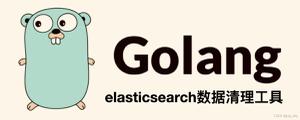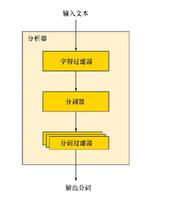为嵌套的Elasticsearch结构格式化Postgres JSON输出
我已经意识到使用SQL数据库(Postgres)是将我的关系数据(24个CSV文件中的40+
GB)移植到具有嵌套结构的
Elasticsearch中的最有效方法之一。但是我仍然对Postgres的JSON输出的格式存在一些问题:1)不需要的换行符(\
n),2)不需要的标题行和3)不需要的日期格式。这是一个基本示例进行演示:
file1id,age,gender,wave
1,49,M,1
2,72,F,0
file2
id,time,event1
1,2095-04-20 12:28:55,V39
1,2095-04-21 2:27:45,T21
2,2094-05-17 18:17:25,V39
file3
id,time,event2
1,2095-04-22 3:48:53,P90
2,2094-05-18 1:28:23,RT4
2,2094-05-18 4:23:53,W3
将这些CSV添加到名为Forum的架构并运行以下SQL代码后:
with f_1 as( SELECT id, json_agg(file1.*) AS tag
FROM forum.file1
GROUP BY id
), f_2 as (
SELECT id, json_agg(file2.*) AS tag
FROM forum.file2
GROUP BY id
), f_3 as (
SELECT id, json_agg(file3.*) AS tag
FROM forum.file3
GROUP BY id
)
SELECT ('{"id":' || a.id), ('"file1":' || a.tag), ('"file2":' || b.tag), ('"file3":' || c.tag ||'}')
FROM f_1 AS a, f_2 AS b, f_3 AS c
WHERE b.id = a.id AND c.id = a.id;
我得到以下输出(pgAdminIII-导出到文件-没有报价):
?column?,?column?,?column?,?column?{"id":1,"file1":[{"id":1,"age":49,"gender":"M","wave":1}],"file2":[{"id":1,"time":"2095-04-20T12:28:55","event1":"V39"},
{"id":1,"time":"2095-04-21T02:27:45","event1":"T21"}],"file3":[{"id":1,"time":"2095-04-22T03:48:53","event2":"P90"}]}
{"id":2,"file1":[{"id":2,"age":72,"gender":"F","wave":0}],"file2":[{"id":2,"time":"2094-05-17T18:17:25","event1":"V39"}],"file3":[{"id":2,"time":"2094-05-18T01:28:23","event2":"RT4"},
{"id":2,"time":"2094-05-18T04:23:53","event2":"W3"}]}
您可以看到,对于给定的ID,多行数据。对于给定的ID(即没有\
n),我需要所有数据都在一行上。我没有花很多时间但想更改的其他几个小问题是不需要第一行,我想摆脱它?column?,?column?,?column?,?column?而不必在处理完成后打开文件。理想情况下,我也希望T日期输出中没有任何内容。我应该能够T在Elasticsearch中容纳它,但是到目前为止还没有被它接受。这是我希望从Postgres获得的输出,该输出可用于Elasticsearch的输入(使用stream2es和嵌套的映射结构):
{"id":1,"file1":[{"id":1,"age":49,"gender":"M","wave":1}],"file2":[{"id":1,"time":"2095-04-20 12:28:55","event1":"V39"},{"id":1,"time":"2095-04-21 02:27:45","event1":"T21"}],"file3":[{"id":1,"time":"2095-04-22 03:48:53","event2":"P90"}]}{"id":2,"file1":[{"id":2,"age":72,"gender":"F","wave":0}],"file2":[{"id":2,"time":"2094-05-17 18:17:25","event1":"V39"}],"file3":[{"id":2,"time":"2094-05-18 01:28:23","event2":"RT4"},{"id":2,"time":"2094-05-18 04:23:53","event2":"W3"}]}
添加to_json确实可以修复不需要的换行符,但它可以\"代替"stream2es解析器所不喜欢的:
SELECT to_json('{"id":' || a.id), to_json('"file1":' || a.tag::json),
to_json('"file2":' || b.tag::json), to_json('"file3":' || c.tag::json ||'}')
"{\"id\":1","\"file1\":[{\"id\":1,\"age\":49,\"gender\":\"M\",\"wave\":1}]"…
es2stream异常: Exception in thread "stream dispatcher"
java.lang.ClassCastException: java.lang.String cannot be cast to
clojure.lang.IPersistentMap
回答:
全选一列(而不是四列)。函数format()将帮助您更清楚地记录下来。用
regexp_replace (str, '(\d\d\d\d-\d\d-\d\d)T', '\1 ', 'g')更正日期格式,并
replace (str, e' \n ', '')跳过换行符。
使用COPY命令可以简化问题:
COPY ( with f_1 as(
SELECT id, json_agg(file1.*) AS tag
FROM forum.file1
GROUP BY id
), f_2 as (
SELECT id, json_agg(file2.*) AS tag
FROM forum.file2
GROUP BY id
), f_3 as (
SELECT id, json_agg(file3.*) AS tag
FROM forum.file3
GROUP BY id
)
SELECT
replace(
regexp_replace(
format('{"id":%s,"file1":%s,"file2":%s,"file3":%s}',
a.id, a.tag, b.tag, c.tag),
'(\d\d\d\d-\d\d-\d\d)T', '\1 ', 'g'),
e' \n ', '')
FROM f_1 AS a, f_2 AS b, f_3 AS c
WHERE b.id = a.id AND c.id = a.id
) TO '/full/path/to/your/file';
要在每行数据前添加命令行,可以使用带有返回两行功能的技巧。格式化的某些部分可以偶尔移至该功能。
create or replace function format_data_line(command text, data_str text)returns setof text language plpgsql as $$
begin
return next command;
return next
replace(
regexp_replace(data_str,
'(\d\d\d\d-\d\d-\d\d)T', '\1 ', 'g'),
e' \n ', '');
end $$;
COPY (
with f_1 as(
SELECT id, json_agg(file1.*) AS tag
FROM forum.file1
GROUP BY id
), f_2 as (
SELECT id, json_agg(file2.*) AS tag
FROM forum.file2
GROUP BY id
), f_3 as (
SELECT id, json_agg(file3.*) AS tag
FROM forum.file3
GROUP BY id
)
SELECT
format_data_line(
'my command',
format('{"id":%s,"file1":%s,"file2":%s,"file3":%s}',
a.id, a.tag, b.tag, c.tag))
FROM f_1 AS a, f_2 AS b, f_3 AS c
WHERE b.id = a.id AND c.id = a.id
) TO '/full/path/to/your/file';
以上是 为嵌套的Elasticsearch结构格式化Postgres JSON输出 的全部内容, 来源链接: utcz.com/qa/424770.html







